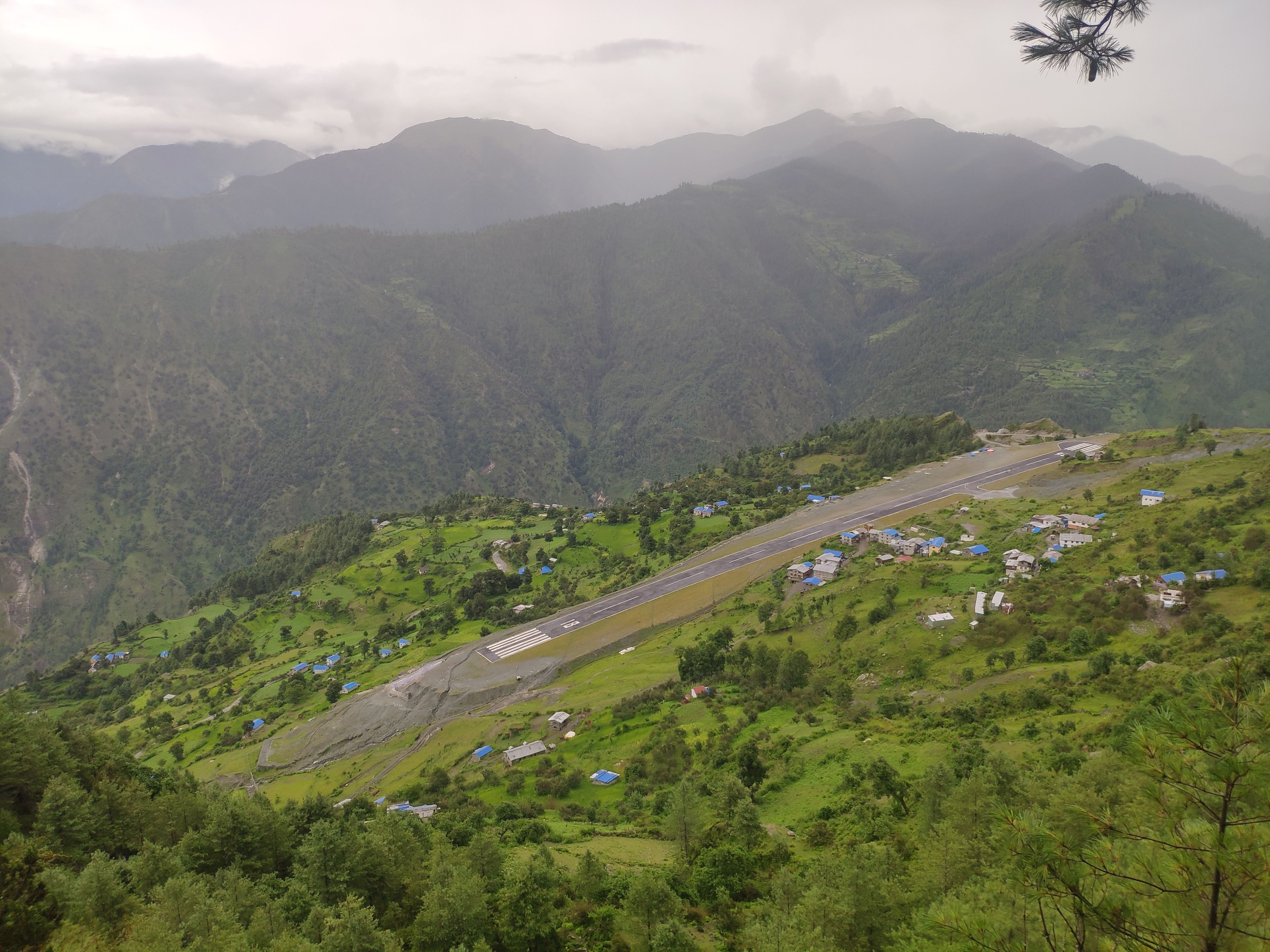With its vast and diverse landscapes, India has many airports catering to millions of passengers yearly. While many airports available for commercial use feature long runways, some are tiny. These airports have some of the shortest runways in the country but are still vital links in India’s air transportation network. This article will examine India’s top five shortest airport runways, highlighting their challenges and unique attributes that distinguish them.
1 Baljek Airport
Runway length: 3,300 ft (1006 m)
|
Location |
Baljek, Meghalaya state, India |
|
ICAO Code |
VETU |
|
Common Name |
Tura Airport |
|
Inauguration Date |
2008 |
Baljek Airport’s inception dates to 1983, when the proposal for its establishment was submitted to the Central Government and finally inaugurated in October 2008. The airport was initially designed to accommodate aircraft with a capacity of 20 passengers, such as the Dornier 228. Still, the Airports Authority of India (AAI) has been actively developing Baljek Airport to enable the operation of larger aircraft, precisely the ATR 42 and ATR 72 types.
To accommodate these aircraft, the existing 3,300-foot runway was undergoing an extension of an additional 1,200 feet, and 58 acres of other land were acquired to facilitate the airport’s growth and enhanced operational capabilities. There were plans for it to be fully functional by the end of 2022.
Photo: Niharika_nature | Shutterstock
However, as of 2023, this airport has yet to offer scheduled commercial air services and is unused. Last May, Meghalaya’s Chief Minister proposed establishing heliports in Tura and setting up an international airport to enhance tourism. The Meghalaya High Court has directed the state government to identify land for a greenfield airport, as the current facility cannot accommodate big aircraft.
2 Kullu-Manali Airport
Runway length: 3,691 ft (1125 m)
|
Location |
Bhuntar, Himachal Pradesh state, India |
|
ICAO Code |
VIBR |
|
Common Name |
Bhuntar Airport |
|
Inauguration Date |
1987 |
Kullu–Manali Airport, also known as Bhuntar Airport, serves the cities of Kullu and Manali in the northern Indian state of Himachal Pradesh.
Pilots often consider Kullu–Manali Airport a challenging destination due to its single runway in a deep valley, with surrounding peaks rising several thousand feet higher than the runway. Additionally, the airport’s proximity to the Beas River makes it susceptible to flooding, as was witnessed in 1995. In 2008, a new air terminal was inaugurated, and the airport apron was expanded to accommodate two aircraft at a time.
Photo: Media_works | Shutterstock
There are plans to upgrade Kullu–Manali Airport to enhance air connectivity in Himachal Pradesh. The Indian Institute of Technology (IIT) Roorkee has prepared a detailed feasibility report for expanding the airport’s runway. The Airports Authority of India (AAI), which operates the airport, has plans to extend the runway by an additional 60 meters.
3 Shimla Airport
Runway length: 3,691 ft (1125 m)
|
Location |
Jubbarhatti, Himachal Pradesh state, India |
|
ICAO Code |
VISM |
|
Common Name |
Jubbarhatti Airport |
|
Inauguration Date |
1987 |
Shimla Airport is a regional airport in Jubbarhatti, approximately 22 kilometers (14 miles) from Shimla. In the past, Kingfisher Airlines operated the sole daily flight connecting Shimla to Delhi. However, this service encountered a unique challenge, as the aircraft had load restrictions imposed due to Shimla’s high altitude, limiting its capacity to just 28 passengers on the return journey. As a result, Kingfisher Airlines ceased its operations in Shimla in September 2012.
On April 27, 2017, there was a glimmer of hope as commercial service was reinstated by Alliance Air, reviving air connectivity to Shimla. However, this service was subsequently suspended in March 2020. There were initial expectations for the service to resume on August 15, 2022, but it faced delays due to airline-related issues. Eventually, the airline recommenced its flight service to Delhi on September 26, 2022. In addition to Alliance Air’s services, Pawan Hans offers helicopter services at the airport.
4 Agatti Airport
Runway length: 4,235 ft (1291 m)
|
Location |
Agatti Island, Union Territory of Lakshadweep, India |
|
ICAO Code |
VOAT |
|
Common Name |
Agatti Airport |
|
Inauguration Date |
1988 |
Agatti Airport is a regional airport on Agatti Island, serving Lakshadweep, India. It is the only airport in the Lakshadweep archipelago, located off the west coast of India. The airport was built in 1987, and it began operations the year after. It initially had a small terminal, but improvements were made in 2006. Alliance Air started services in 2010.
Expansion plans are to extend the runway, construct a new terminal, and make other improvements for better connectivity. The Airports Authority of India (AAI) received environmental clearance in 2013 for a project to extend the runway by constructing a 1,500-foot-long bridge on stilts over the sea.
This extension enabled aircraft operation like the ATR-72 without payload restrictions. Initially, there was a plan to build a bridge between Agatti and the neighboring uninhabited Kalpati Island to accommodate larger aircraft such as the Airbus A320 or Boeing 737. However, this plan was rejected due to environmental concerns, as it would have impacted a turtle colony and required leveling Kalpati Island to extend the runway.
As of 2023, the airport features a single runway operated by the Airports Authority of India. The terminal building can accommodate up to 50 passengers during peak hours.
5 Balurghat Airport
Runway length: 4905 ft (1495 m)
|
Location |
Balurghat, West Bengal, India |
|
ICAO Code |
VEBG |
|
Common Name |
Balurghat Airport |
|
Inauguration Date |
1984 |
Historically, the airport has a military origin, dating back to World War II when the British used it. Commercial flight operations began in the 1950s with Surekha Air Service, which later ceased during the India-Pakistan war. In 1984, Vayudoot operated from the airport, but these services were eventually discontinued due to issues such as the lack of navigation systems, insufficient passenger demand, and financial losses.
The airport occupies an area of 132.66 acres at an elevation of 78 feet above sea level, featuring a single runway. There were plans to revitalize the airport, with the Government of West Bengal allocating funds for upgrading and extending the airstrip, enhancing passenger facilities, air traffic management, and more. However, as of 2023, Balurghat Airport currently isn’t operational.
While these runways may be short, they serve vital roles in connecting remote destinations to the rest of the country. Pilots who operate at these airports undergo specialized training to ensure the safety of passengers and aircraft. These airports, despite their limitations, are a testament to the resilience and adaptability of India’s aviation industry.
Have you ever had the chance to fly to any of these airports? Tell us in the comments.
Sources: News18, thestatesman.com



